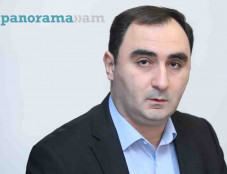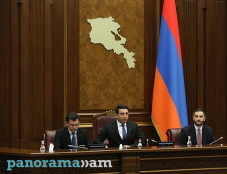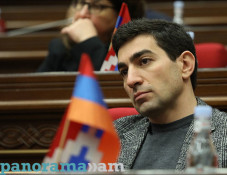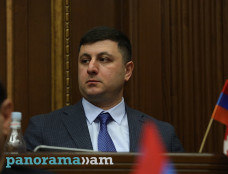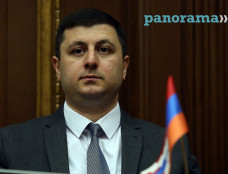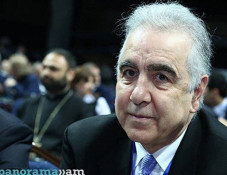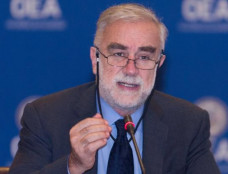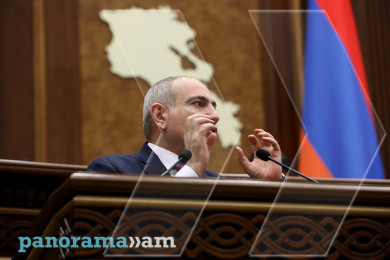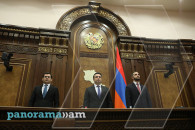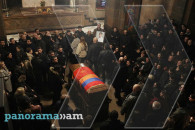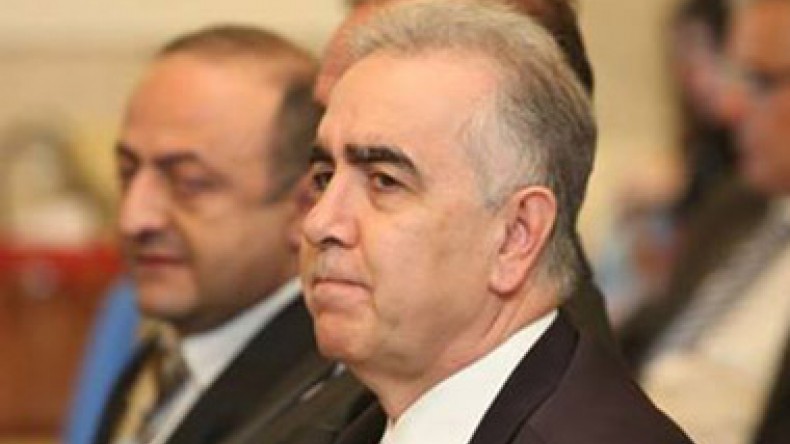
Strangely, Turkey did not publicize correcting signpost of Armenian Church
By Harut Sassounian
TheCaliforniaCourier.com
I just learned that the Turkish government has quietly corrected the signpost near the historic Holy Cross Church (Sourp Khach) on Akhtamar Island in Lake Van, by indicating its “Armenian” origin.
For decades, Turkish authorities systematically concealed the true identity of thousands of Armenian churches and monuments so no one would remember that Armenians lived for thousands of years in lands presently occupied by the Republic of Turkey. By not disclosing the traces of Armenian civilization, Turkish officials calculated that there would be no need to explain the disappearance of Armenians — another manifestation of Turkish denialism.
Back in 2007, the Turkish government held an elaborate opening ceremony after renovating the 10th Century Holy Cross Church. While some Armenians naively participated in this Turkish propaganda exercise, I wrote several critical editorials pointing out that Turkish officials did not permit Armenian church services (except once a year), and refused to allow a cross displayed on its dome. Instead, the Sourp Khach Church was officially designated as a museum and placed under the administration of the Turkish Ministry of Culture and Tourism, and not under the jurisdiction of the Armenian Patriarchate of Istanbul. Since then, a cross has been placed on the Church dome.
One issue that I failed to mention back in 2007 was the inscription on the signpost leading to the Church. The original signpost made no reference to Armenians either in English or in Turkish. Below is the heading and first words of the previous inscription, written in English:
“Akdamar Island & Monumental Museum. Fee 5 TL [Turkish Liras]. Akdamar Island and Church. Akdamar Church was built by the monks of architects Manuel between 915-921 by the order of Vaspurakan King Gagik I….”
Last week, during a chance encounter in a Glendale Armenian bookstore, Senem Cevik, Assistant Professor at Ankara University, showed me two different photos of the Holy Cross Church signpost. The first, taken by her a year ago, showed the foregoing inscription. The second, taken by one of her colleagues last month, displayed the new inscription that refers to the building as an Armenian Church:
“Akhdamar Armenian Church of the Holy Cross. The Church was built by monk/architect Manuel between 915 and 921, by the order of Gagik I, King of Vaspurakan. Built at the form of a four-leaf clover and under the plan of a cruciform, the church was covered by a dome from inside and by a pyramidal cone from outside. The church has two gates, one at the southern and another at the western side. During subsequent periods, the Chapel of Zacharias I, a jamatun and a bell tower were added to the church and the Chapel of Saint Stephanos was built separately. Built in the name of the Holy Cross, the church has been transformed into a monastery in 1131. On the stone reliefs of the façade of the church, religious scenes taken from the Old and New Testament, palace life, hunting scenes as well as human and animal figures are depicted. These depictions are important as they distinguish the church from similar ones. There are various wall paintings representing descriptions taken from the Bible on the inner side of the church’s walls.”
This new inscription clearly designates Holy Cross, both in English and Turkish, as an Armenian Church. However, there is still a problem. While the church’s name is correctly written in English as Akhtamar, in the Turkish language inscription it is referred to by its Turkified name, Akdamar.
I can only speculate as to why the Turkish government did not make a public announcement regarding the revised inscription of the Sourp Khach Church signpost. Here are some possible reasons:
– Oversight by low-level Turkish officials who did not realize the P.R. value of publicizing the change.
– Reluctance of high-ranking officials to draw attention to the change, fearing that they would appear ridiculous taking credit for something so obvious that should have been done long time ago.
– Concerns by Turkish officials that making public the revised text would impress the outside world, while triggering criticism at home for catering to Armenians.
– Preoccupation of newly-elected Turkish leaders with other urgent matters. They may yet make an announcement at a later date.
It is equally puzzling that no one on the Armenian side, including the Armenian Patriarchate of Istanbul, has made any mention of the revised inscription reflecting the Armenian origin of Holy Cross Church.
One hopes that this single rectification of the Akhtamar Church signpost would be a prelude to similar recognition of Armenian cultural heritage in museums, churches, and monuments all across Turkey, including the City of Ani.
Newsfeed
Videos





